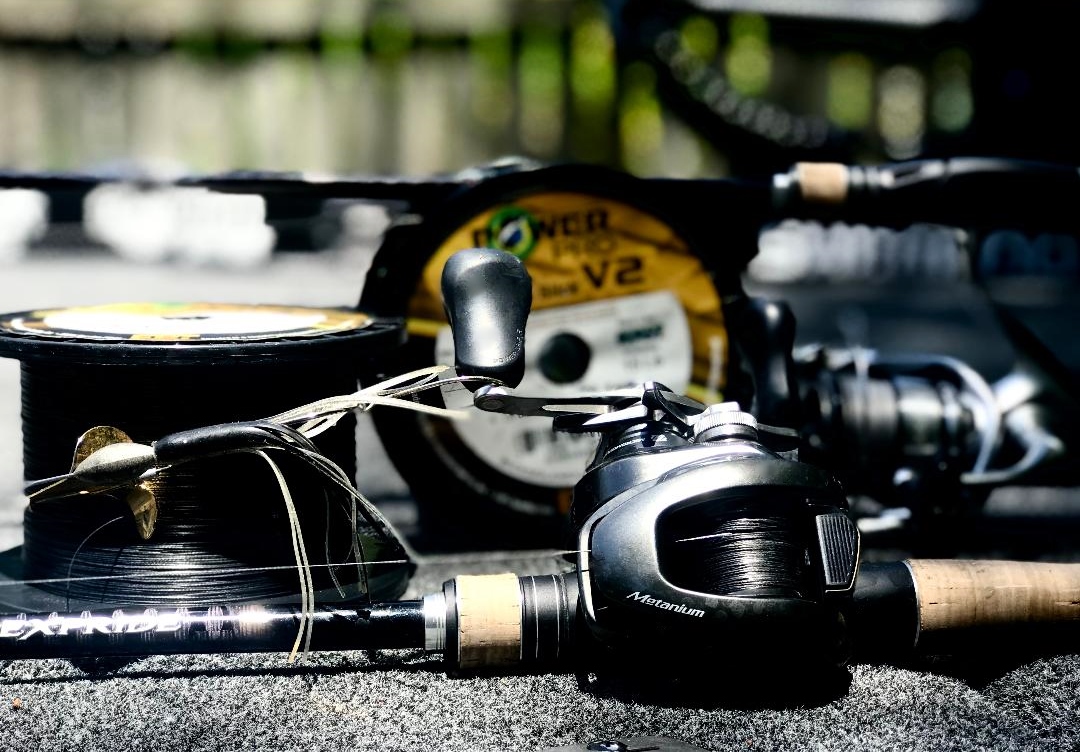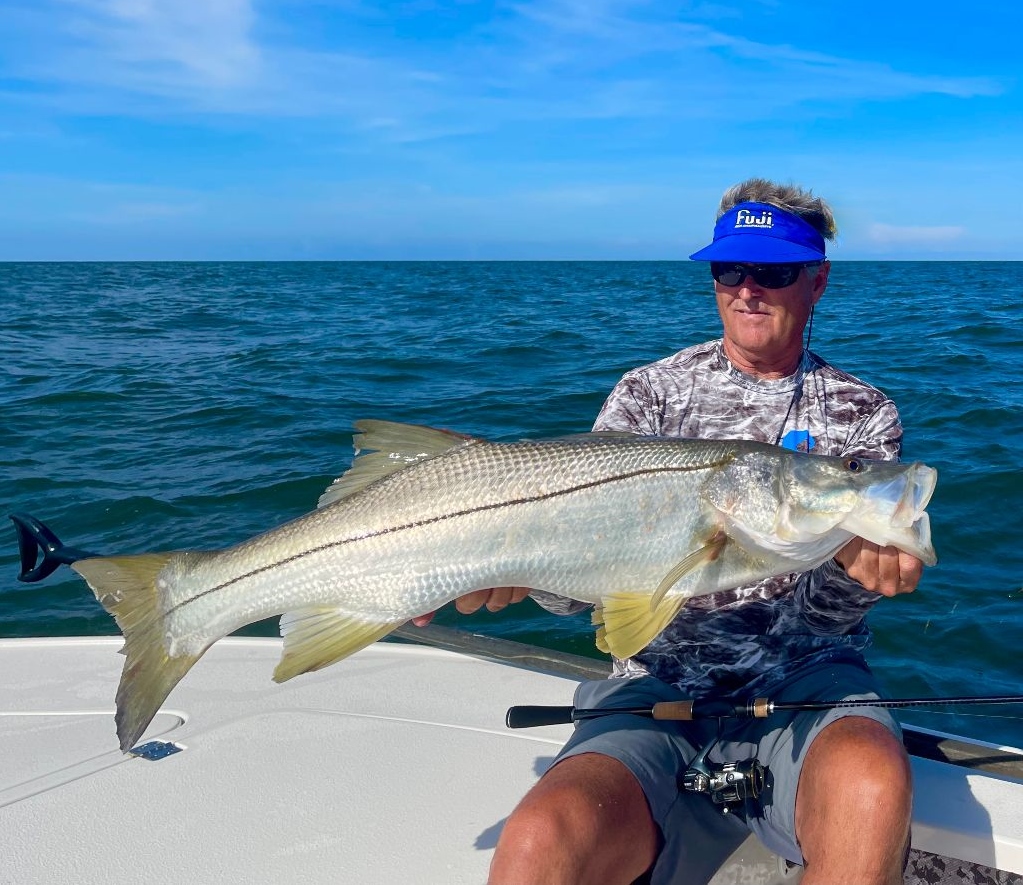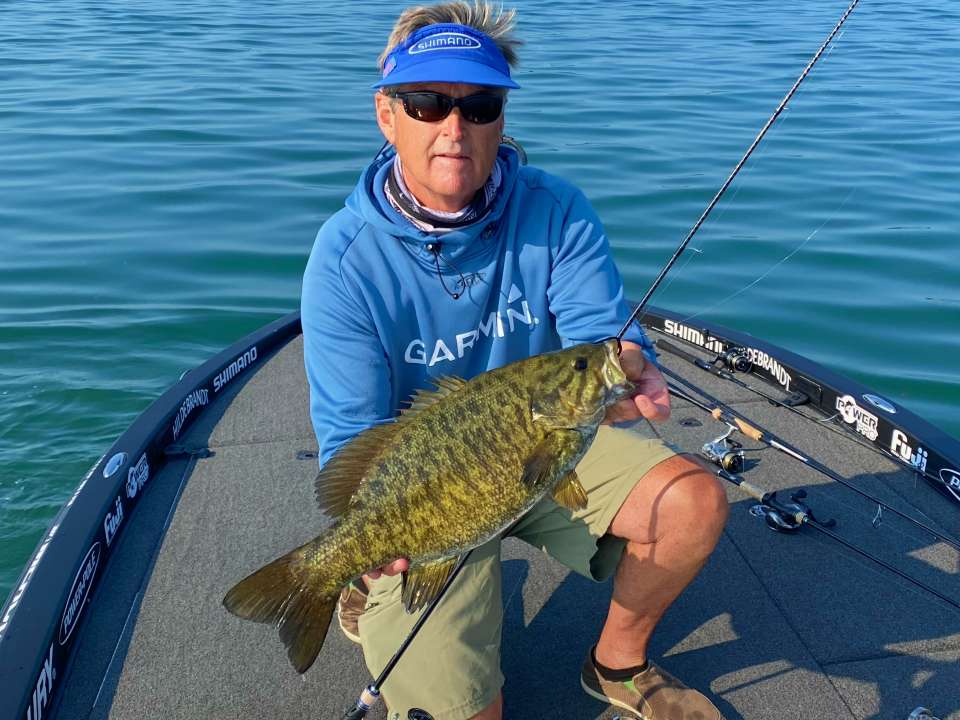
People often ask me what type of line I use, and it’s a fair question. One that’s not easily answered, however. There are innumerable situations that require not only different types of lines, but varied pound ratings as well.
But before we dive into any of this, I should inform you that I’m sponsored by Shimano and PowerPro — two brands that I’m extremely proud to represent. And it’s their lines that I use almost exclusively.
As I’m sure you know, PowerPro makes premium braided fishing lines — like Super Slick and Maxcuatro. Last July, Shimano introduced its new fluorocarbon called Mastiff FC, which features their exclusive NanoArmor technology — a process that greatly improves line and knot strength. Even better, Mastiff FC is nearly impossible to see in the water. It’s so impressive; it won “Best New Line” at ICAST 2024, and it’s the fluoro Jeff “Gussy” Gustafson used to win last year’s Bassmaster Classic.
That said, I would like to tell you why I like these lines and why I’m so confident in their performance characteristics.
Braid first
PowerPro has been in the business of making braided fishing lines for decades, and they are the longtime leader in that category.
Their most recent introduction is Super8Slick V2, which also won “Best New Fishing Line” at ICAST a few years back. It has a supple, smooth texture, which casts with ease. It’s the most manageable braided line I’ve ever used, and it doesn’t bite into itself on the spool like other braids.
Best of all, it doesn’t break. In fact, it’s so strong, I use 10-pound Super Slick for numerous applications in saltwater for species much larger than black bass — like tarpon, snook and bull reds. Not only are these fish fierce fighters, they oftentimes relate to piers, mangrove trees and oyster bars, which are serious concerns during battle.

Having experienced the true tensile strength of thin diameter braid in saltwater, I know what to expect when fishing for any species of black bass — whether I’m casting ultralight soft-plastics for smallmouth or frogging dense matted cover for largemouth. Instead of using 15-pound braid for spinning tackle like most bass anglers, I drop down to 8 and 10 pound. Likewise for frogging and punching. Instead of 65-pound braid, I’ll use 30- to 40- pound Super Slick. It’s far more manageable and I can cast it further, yet it still has the strength to winch big fish out of super thick cover.
There are times when I use it for other lures and techniques, as well — including bladed jigs, swim jigs and buzzbaits. If I’m applying these various lures around dense cover, like lily pads, flooded brush or thick hydrilla, I know I’ll have the leverage to move bigger fish away from any potential snags.
Although Super8Slick V2 comes in numerous pigments — some of which are high-viz — I usually choose onyx, which is a variation of black.
Now for fluoro
When I’m dealing with ultra-clear water and finesse situations, that’s when Mastiff FC gets the call. I splice my fluoro to braid, using it more as a leader in nearly every application.
For example, if I’m throwing a Ned-rig Senko at smallmouth in ultra-clear water, I’ll go with 10-pound Super8SlickV2 as the main line and add a length of 8- to 10-pound Mastiff fluorocarbon as the leader, sometimes even lighter. The length of that leader is usually 8 to 12 feet. I splice the two lines by using back-to-back Uni knots. Although there are others, this connection flows through the rod guides well and it never fails me … even when I’m in pursuit of big tarpon (which would require a much heavier leader, of course).

That’s my basic setup for spinning tackle. When I’m pitching or flipping with a baitcaster in ultra-clear water, I may use a similar setup. Instead of 8- to 10-pound braid, however, I would obviously use 30-pounds or more — tipping it with at least 16-pound to as much as 25-pound fluoro. But that’s only when I feel it’s necessary. If I can get away with using straight braid to the lure, all the better. Thick cover conceals the line in most situations. And if the water I’m fishing has any stain to it at all, I feel line size or makeup becomes a nonfactor.
Similarly, if I’m throwing power-type moving baits — like bladed jigs or swim jigs — I’ll go with straight braid whenever possible. The exception would be around sparse cover in ultra-clear water. Then I would employ fluorocarbon.
For swimbaits, crankbaits, jerkbaits and various bottom-probing soft-plastics or jigs, I prefer straight fluorocarbon. The only time I use mono or copolymer lines is when I’m fishing slower moving topwaters, like prop baits and poppers. Those require a buoyant line.
Line summary
So when pondering which line to use, consider the clarity of the water you’re fishing, the density of the cover and the speed of your presentation.
Again, the only time I use mono or copolymer lines instead of braid or fluorocarbon is when I’m fishing slower moving topwater lures. Otherwise, it’s braid, fluoro or a combination of the two.
And if you’re looking for lines you can rely on, try Shimano’s Mastiff FC and PowerPro’s Super8Slick V2. I promise you won’t be disappointed.
Tight lines!
Follow Bernie Schultz on Instagram, Facebook and through his website.





